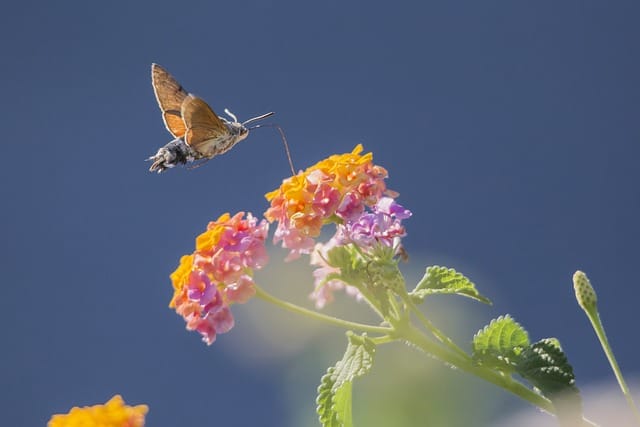How to grow Lantanas
The Lantana flower, also known as Lantana camara, is a beautiful and versatile flowering plant that is loved by gardeners for its vibrant colors and long-lasting blooms

In this article:
- Introduction
- Choosing the Right Lantana Varieties
- Ideal Growing Conditions for Lantanas
- Preparing the Soil for Planting
- Planting Lantanas
- Watering and Irrigation
- Fertilizing Lantanas
- Pruning and Shaping Lantanas
- Dealing with Pests and Diseases
- Propagation Methods for Lantanas
- Overwintering Lantana Plants
- Common Lantana Cultivation Problems
- Enjoying the Blooms: Lantana Flower Arrangements
- Conclusion
Introduction
The Lantana flower, also known as Lantana camara, is a beautiful and versatile flowering plant that is loved by gardeners for its vibrant colors and long-lasting blooms. Native to tropical regions, Lantanas can brighten up any garden or landscape with their clusters of colorful flowers.
Choosing the Right Lantana Varieties
Before you begin growing Lantanas, it's important to choose the right varieties for your garden. Lantanas come in a wide range of colors, including yellow, orange, pink, and purple. Some popular varieties include 'Miss Huff', 'New Gold', and 'Dallas Red'.
Ideal Growing Conditions for Lantanas
Lantanas thrive in warm and sunny climates. They prefer full sun exposure for at least 6 to 8 hours a day. The ideal temperature range for Lantanas is between 60°F to 85°F (15°C to 29°C). Ensure that your planting location has well-draining soil to prevent waterlogging.
Preparing the Soil for Planting
Before planting your Lantanas, it's essential to prepare the soil properly. Lantanas prefer slightly acidic or neutral soil with a pH range of 6.0 to 7.5. To improve the soil's drainage and fertility, incorporate organic matter such as compost or well-rotted manure. Remove any weeds or rocks from the planting area.
Planting Lantanas
When planting Lantanas, space them about 18 to 24 inches apart to allow for proper air circulation. Dig a hole that is slightly larger than the root ball of the plant. Gently place the Lantana in the hole and backfill with soil, firming it around the roots. Water the plant thoroughly after planting.
Watering and Irrigation
Lantanas are drought-tolerant once established, but they still require regular watering during their initial growth period. Water the plants deeply once or twice a week, allowing the soil to dry out between waterings. Avoid overwatering, as it can lead to root rot. Mulching around the plants can help retain soil moisture.
Fertilizing Lantanas
To encourage healthy growth and abundant blooms, it's important to fertilize your Lantanas regularly. Use a balanced, slow-release fertilizer according to the manufacturer's instructions. Apply the fertilizer once every 4 to 6 weeks during the growing season. Avoid excessive fertilization, as it can result in lush foliage but fewer flowers.
Pruning and Shaping Lantanas
Regular pruning is essential to keep your Lantanas in shape and promote bushier growth. Prune the plants in early spring before new growth begins. Remove any dead or damaged branches, as well as any excessive growth. Pinching back the tips of the stems can help promote branching and a more compact habit.
Dealing with Pests and Diseases
Lantanas are relatively resistant to pests and diseases. However, they can occasionally be attacked by aphids, whiteflies, or spider mites. Regularly inspect your plants for any signs of infestation and treat them with organic insecticides if necessary. Proper care, including adequate watering and good air circulation, can help prevent diseases such as powdery mildew.
Propagation Methods for Lantanas
Lantanas can be propagated through seeds, stem cuttings, or layering. Collect ripe berries from the plant and extract the seeds. Sow the seeds in a well-draining potting mix and keep them moist until germination. Stem cuttings can be taken in late spring or early summer and rooted in a propagation mix. Layering involves bending a lower stem to the ground and anchoring it down with a rock or wire until it forms roots.
Overwintering Lantana Plants
In colder climates, Lantana plants are not frost-tolerant and need protection during the winter. Before the first frost, cut back the plants to about 6 inches above the soil line. Mulch around the base of the plants to protect the roots from freezing temperatures. In spring, remove the mulch and the dead plant material.
Common Lantana Cultivation Problems
Some common cultivation problems with Lantanas include yellowing leaves, stunted growth, and lack of flowers. These issues can be a result of various factors such as overwatering, nutrient deficiencies, or inadequate sunlight. Address the specific problem by adjusting the watering schedule, fertilization, or providing better sun exposure.
Enjoying the Blooms: Lantana Flower Arrangements
The vibrant blooms of Lantanas make them a popular choice for flower arrangements. Cut the flowers in the morning before the heat of the day and immediately place the stems in a vase of water. Change the water every few days and remove any wilted flowers. Lantanas can also be dried for long-lasting arrangements.
Conclusion
Growing Lantanas can bring a burst of color and charm to your garden. By choosing the right varieties, providing ideal growing conditions, and following proper care practices such as watering, fertilizing, and pruning, you can enjoy the beauty of Lantanas year-round. Remember to stay vigilant against pests and diseases, and experiment with different propagation methods to expand your Lantana collection. Happy gardening!
